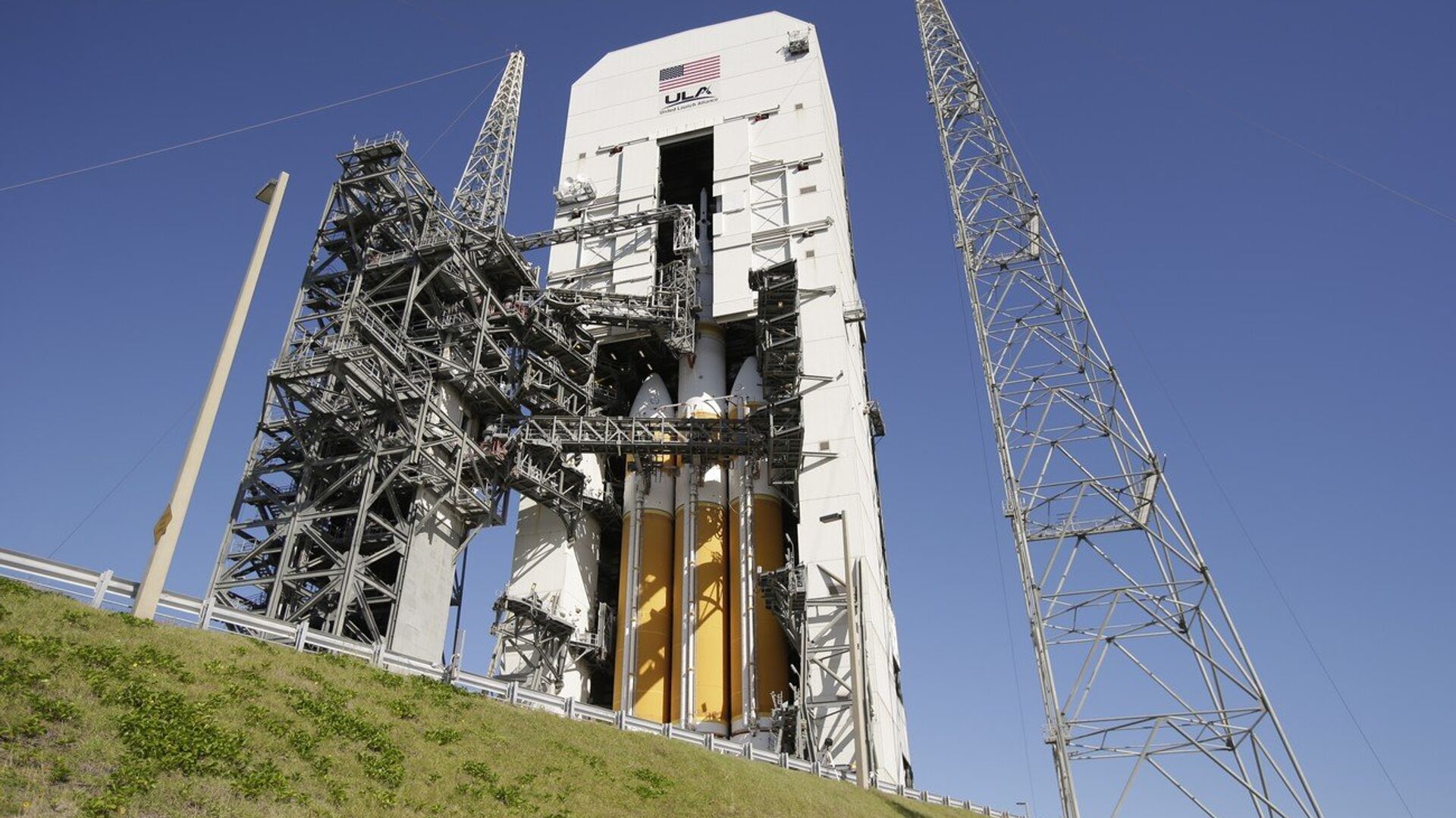https://sputnikglobe.com/20211016/nasas-lucy-mission-blasts-off-to-examine-trojan-asteroids-1089964470.html
NASA's Lucy Mission Blasts Off to Examine Trojan Asteroids
NASA's Lucy Mission Blasts Off to Examine Trojan Asteroids
Sputnik International
According to NASA's plans, the probe's meeting with Trojan asteroids in the main mission is scheduled for March 2033. 16.10.2021, Sputnik International
2021-10-16T09:00+0000
2021-10-16T09:00+0000
2021-10-16T09:07+0000
nasa
science & tech
asteroids
https://cdn1.img.sputnikglobe.com/img/101552/91/1015529192_0:58:1300:789_1920x0_80_0_0_370cc747f325836397f94d2c258a10de.jpg
NASA's Lucy spacecraft is set to launch from Cape Canaveral Space Force Station in Florida for a 12-year first-of-its-kind mission aiming to explore the earliest days of our solar system.Lucy, named after the Australopithecus Lucy (a skeleton of a female Australopithecus found in Ethiopia), will be the first ever mission to Trojan asteroids. As NASA spokesman Thomas Zurbuchen said on the eve of the launch, the probe's mission, which costs $ 981 billion, will allow scientists to see cosmic bodies that will shed light on the history of the origin of our planet and the entire solar system.Trojans are asteroids that are located in the vicinity of a planet's L4 and L5 Lagrange points. At these points, the gravity of the planet and its stare are balanced, and cosmic bodies can remain in them indefinitely. Jupiter has the largest number of Trojan satellites - over 6,000.Follow Sputnik's Live Feed to Find Out More!
Sputnik International
feedback@sputniknews.com
+74956456601
MIA „Rossiya Segodnya“
2021
Sputnik International
feedback@sputniknews.com
+74956456601
MIA „Rossiya Segodnya“
News
en_EN
Sputnik International
feedback@sputniknews.com
+74956456601
MIA „Rossiya Segodnya“
NASA's Lucy Mission Blasts Off to Examine Trojan Asteroids
Sputnik International
NASA's Lucy Mission Blasts Off to Examine Trojan Asteroids
2021-10-16T09:00+0000
true
PT1S
Sputnik International
feedback@sputniknews.com
+74956456601
MIA „Rossiya Segodnya“
nasa, science & tech, asteroids, видео
nasa, science & tech, asteroids, видео
NASA's Lucy Mission Blasts Off to Examine Trojan Asteroids
09:00 GMT 16.10.2021 (Updated: 09:07 GMT 16.10.2021) According to NASA's plans, the probe's meeting with Trojan asteroids in the main mission is scheduled for March 2033.
NASA's Lucy spacecraft is set to launch from Cape Canaveral Space Force Station in Florida for a 12-year first-of-its-kind mission aiming to explore the earliest days of our solar system.
Lucy, named after the Australopithecus Lucy (a skeleton of a female Australopithecus found in Ethiopia), will be the first ever mission to Trojan asteroids. As NASA spokesman Thomas Zurbuchen said on the eve of the launch, the probe's mission, which costs $ 981 billion, will allow scientists to see cosmic bodies that will shed light on the history of the origin of our planet and the entire solar system.
Trojans are asteroids that are located in the vicinity of a planet's L4 and L5 Lagrange points. At these points, the gravity of the planet and its stare are balanced, and cosmic bodies can remain in them indefinitely. Jupiter has the largest number of Trojan satellites - over 6,000.
Follow Sputnik's Live Feed to Find Out More!

